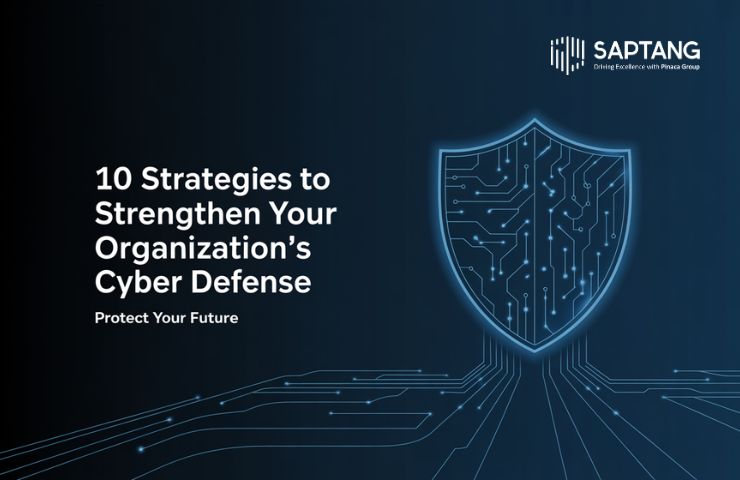
In today’s digital world, cyberattacks are no longer rare—they’re constant. From ransomware to phishing to insider threats, the risk landscape is expanding fast. And while many organizations still react only after something goes wrong, the reality is clear: a strong cyber defense needs to be proactive, not reactive.
Here are 10 practical strategies that can help strengthen any organization’s approach to cybersecurity and reduce the chances of a major incident.
Many security breaches start with a simple mistake—clicking on a fake link or downloading an infected file. Creating a culture of cybersecurity awareness across all levels of an organization helps reduce this risk.
When everyone understands how to spot common threats and treat unexpected emails or login requests with caution, we collectively become the first line of defense.
Passwords alone aren’t enough anymore. Multi-Factor Authentication adds a second step—like a one-time code or fingerprint scan—before granting access.
This small step can make it much harder for attackers to get into systems, even if login credentials are stolen.
Cybercriminals often exploit known flaws in outdated software. Keeping operating systems, applications, and devices updated helps close those security gaps.
Updates and patches should be applied promptly—across workstations, servers, routers, and even smart devices connected to the network.
Not everyone in an organization needs access to every system or file. Following the principle of least privilege—giving users only the access they need—reduces risk in the event of a breach.
When someone leaves the team, their access should be removed immediately. Managing access wisely is a core element of strong cyber defense.
Simple or reused passwords are easy targets for attackers. Encouraging the use of long, unique passwords—supported by password managers—can significantly reduce the risk of unauthorized access.
It’s also helpful to set policies that require regular password updates and discourage the reuse of old ones.
Data backups are critical, especially in the age of ransomware. If attackers encrypt or destroy critical data, a clean backup can allow quick recovery without paying a ransom.
Backups should be tested regularly and stored securely, ideally both in the cloud and offline.
Having systems in place to detect unusual network activity can help identify threats early. Whether through internal tools or third-party services, real-time monitoring adds an essential layer to any cyber defense strategy.
Alerting mechanisms should be configured to flag anything out of the ordinary—unauthorized access attempts, large data transfers, or activity outside normal business hours.
No system is immune to attacks. That’s why it’s important to have a clear plan for how to respond when an incident occurs.
An effective incident response plan outlines steps to take, who’s responsible for what, and how to communicate internally and externally. Regular testing of the plan ensures everyone knows what to do in a crisis.
As hybrid and remote work continue, so do the security challenges. Ensuring employees use secure networks, company-managed devices, and follow basic safety protocols helps extend cyber defense beyond office walls.
Virtual private networks (VPNs), endpoint protection, and clear remote work policies all play a role here.
Cyber threats evolve rapidly. Staying updated on the latest trends—through trusted news sources, security reports, or industry events—can help organizations anticipate risks before they become problems.
Understanding how threat actors operate allows us to adjust defenses, close gaps, and stay one step ahead.
Cyber defense isn’t just about tools and technology—it’s about mindset. When we treat cybersecurity as part of everyday operations rather than a separate IT issue, we build stronger, more resilient organizations.
Every action we take—from raising awareness to updating systems—helps create a safer digital environment for all. In the face of rising threats, taking cybersecurity seriously isn’t just smart—it’s essential.
You may also find this helpful : 5 New Cyber Threats You Can’t Afford to Ignore in 2025